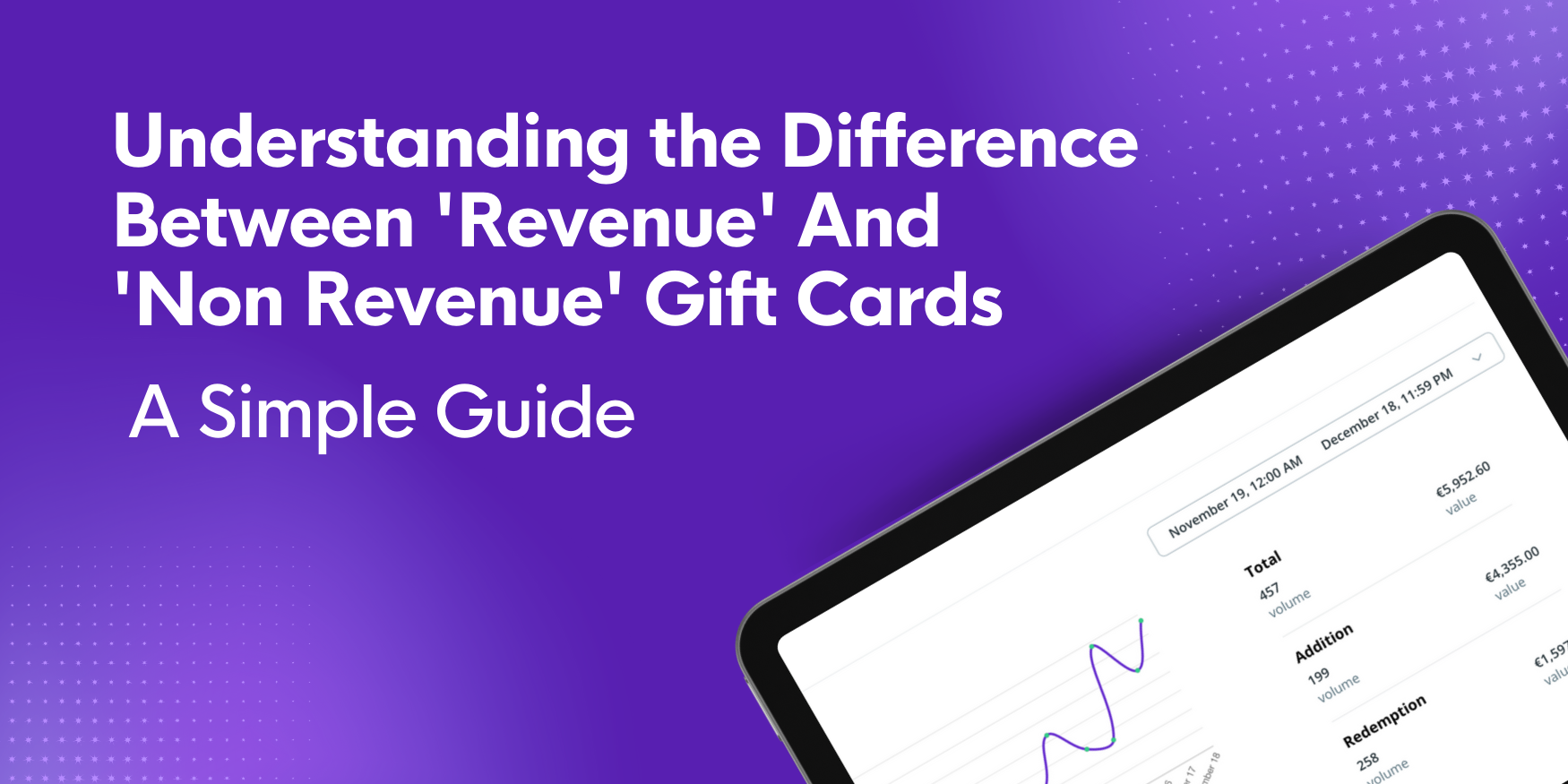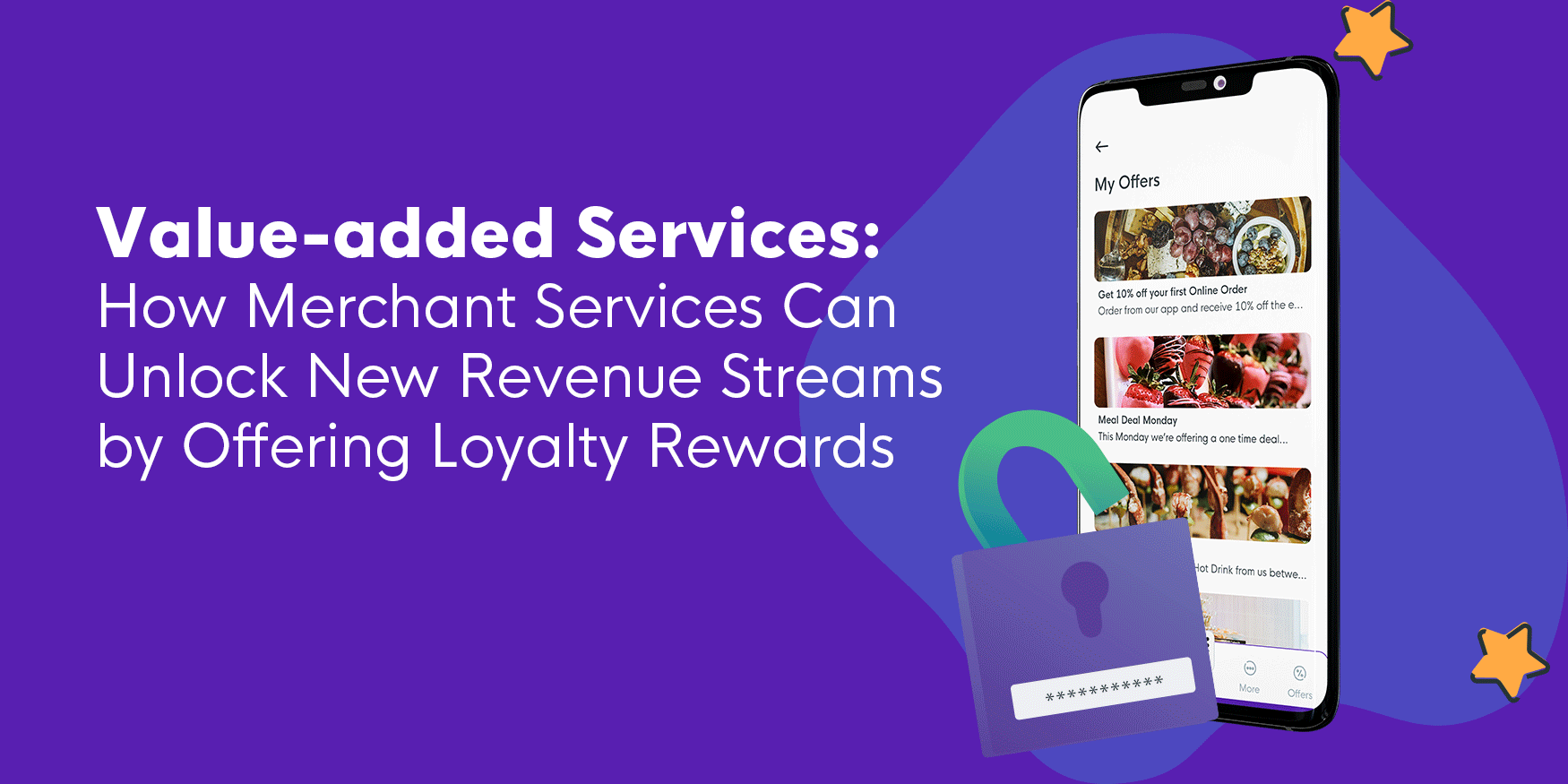Understanding the difference between 'Revenue' and 'Non Revenue' Gift Cards
We’ve all given gift vouchers to friends and family, and we’ve all enjoyed receiving them. But if you’re a business owner or operator issuing gift vouchers, the accounting side of things does matter - and it’s not always as simple as it seems. Don’t worry, though! In under four minutes, this article will break down the three key aspects of gift voucher accounting that you need to know.
Accounting for gift vouchers can seem tricky, especially if numbers aren’t your strong suit or someone else handles your accounting. By reading this guide, you’ll learn to navigate the fine line between revenue and non-revenue - an essential distinction for keeping your business’s finances accurate. From understanding liabilities versus revenue recognition to tracking complimentary vouchers and managing expiration rules, this article offers clear, practical insights to understanding the accounting process for gift vouchers.
Content Summary:
- Multi-Use Vouchers VS Single-Use Vouchers
- Complimentary Vouchers: Marketing Expenses, Not Liabilities
- Expiration Rules: Monetary Vouchers vs. Complimentary Vouchers
- Final Thoughts
1. Multi-Use Vouchers vs. Single-Use Vouchers
When it comes to gift vouchers, it’s essential to understand the distinction between multi-use and single-use vouchers. This differentiation impacts how you account for them on your books, affects when and how taxes are paid, and determines how liabilities and revenues are recorded
Gift vouchers come in two main types: Multi-Use Vouchers and Single-Use Vouchers. The key difference is: Can the voucher be redeemed for any product/service the business sells, or is it restricted to specific items?

Multi-Use Vouchers
These are the most common type of vouchers. Here’s how they work:
- A customer loads a monetary value onto a voucher and gifts it to someone else.
- The recipient can use the voucher across multiple transactions until the balance reaches zero or the voucher expires (based on local laws).
Accounting Tip: Multi-use vouchers are classified as a liability when sold. Over time, that liability decreases as the voucher is redeemed or expires. How to calculate your total outstanding Gift Voucher Liability:
Single Use Vouchers
These vouchers are sold for a defined product or purpose. Think of something like a “Dinner for Two” voucher or a spa experience. Unlike multi-use vouchers, single-use vouchers are treated as a product sale in accounting terms, not a liability.
Key Difference:
- Taxes are due at the time of purchase.
- The revenue is recognised immediately, so it doesn’t appear as a liability on the balance sheet.
2. Complimentary Vouchers: Marketing Expenses, Not Liabilities
Issuing complimentary vouchers can be a powerful marketing tool, but their accounting treatment differs significantly from vouchers sold for monetary value. Complimentary vouchers help attract and retain customers, resolve service issues, and build goodwill. However, it’s crucial to handle them properly in your accounting system to ensure they don’t skew your financial reporting. Sometimes businesses issue gift vouchers without receiving any payment in return. These could be promotional vouchers or compensation for customer service issues. Here’s the critical point:
- Complimentary vouchers are not liabilities; they’re considered a marketing or operational expense.
Accounting Tip: These vouchers shouldn’t be included in your total outstanding voucher liability. Instead, they should be tracked off-balance sheet (often through a third-party reconciliation system) until they’re redeemed.

When a complimentary voucher is used:
- It reduces the sales amount by the voucher value.
- It’s recorded as an expense tied to the cost of making that sale.
3. Expiration Rules: Monetary Vouchers vs. Complimentary Vouchers
Understanding expiration rules for gift vouchers is critical to managing liabilities and customer expectations. Expiration rules can vary by region and type of voucher, and being compliant with these rules ensures you avoid legal issues while maintaining customer trust.
Monetary Gift Vouchers
In places like the EU, monetary gift vouchers must remain valid for at least five years. This makes sense because the vast majority of vouchers (99.9%!) are redeemed within three years. After that, businesses can reasonably consider the liability unlikely to be redeemed.
Complimentary Vouchers
Here’s where businesses have more flexibility. Complimentary vouchers—like a €5 discount on orders over €100 every Tuesday and Wednesday—are entirely at management’s discretion. You decide how long they remain valid, whether it’s one day, one month, or longer.

Final Thoughts!
Understanding the accounting treatment of gift vouchers is essential for keeping your books accurate and your business running smoothly. Whether you’re dealing with multi-use, single-use, or complimentary vouchers, the right approach ensures everything stays clear and compliant.
Gift vouchers are a powerful tool for businesses, but understanding their accounting is key. Multi-use vouchers are treated as liabilities until redeemed or expired, while single-use vouchers are considered revenue at the time of purchase. Complimentary vouchers, on the other hand, are marketing expenses and should be accounted for separately. Regional rules, like minimum expiration dates, also play a role so it’s important to stay informed. If you want to dive deeper into how gift vouchers impact your business’s liabilities and revenues, speak to an expert from LoyLap today!
Get started with Gift Cards by LoyLap!
.png?width=110&height=53&name=tl%20(1).png)





Leave a comment